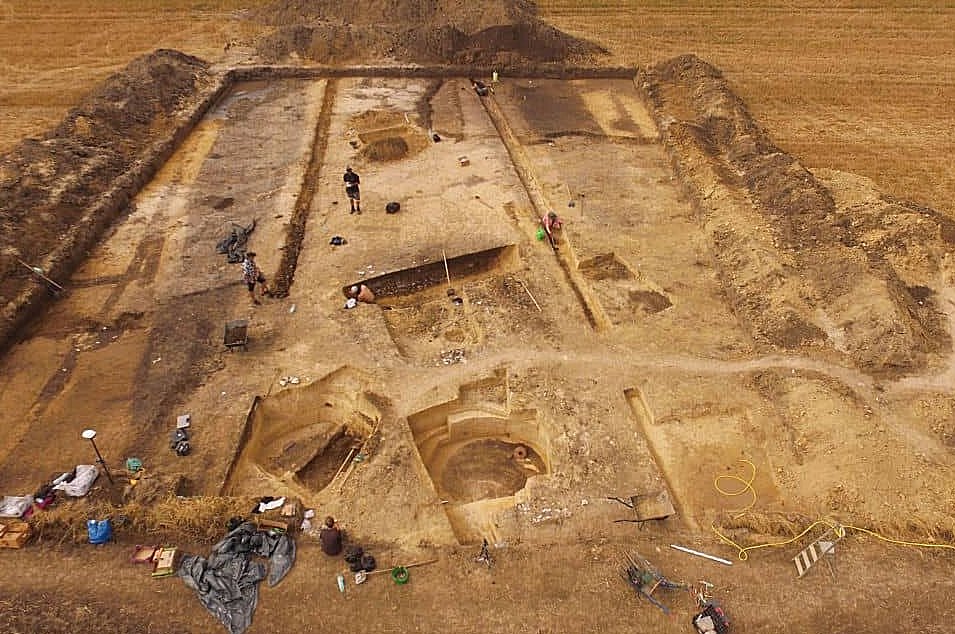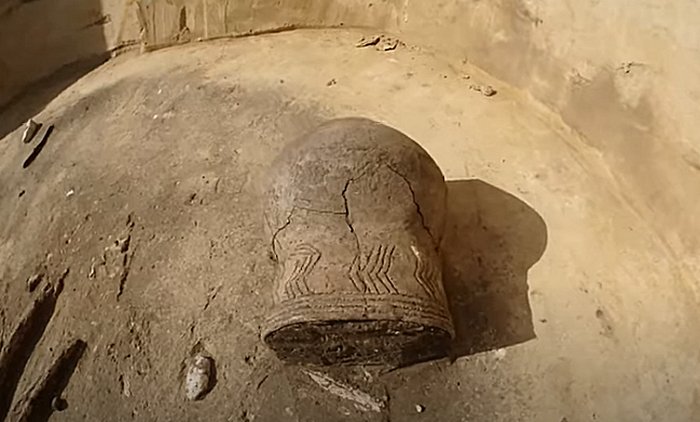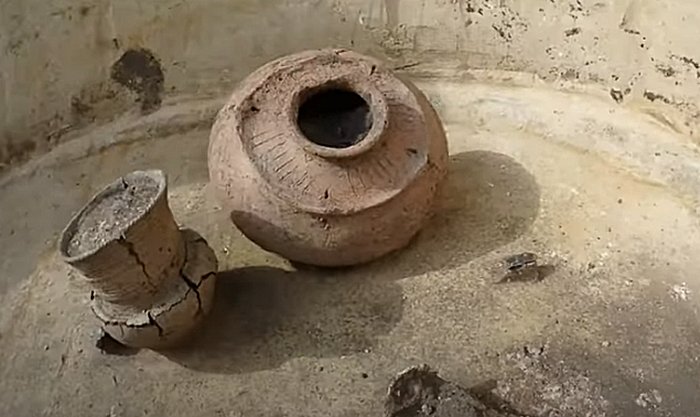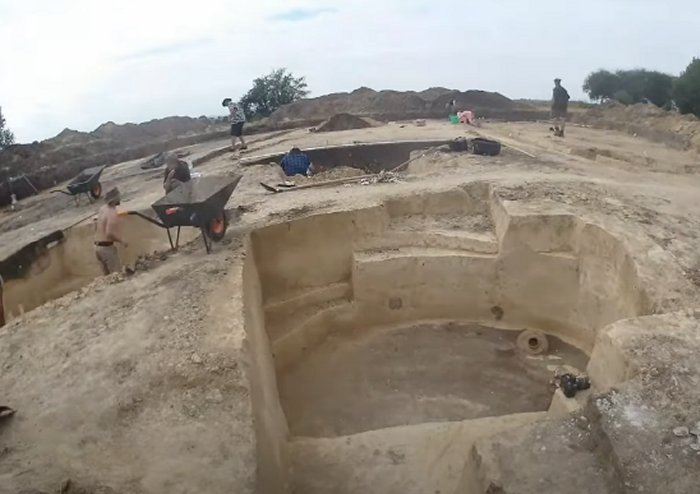 Excavations at Debiany. Image credit: Jan Bulas
Excavations at Debiany. Image credit: Jan Bulas“Their longer walls were reinforced with wooden palisades, while the short eastern walls contained an entrance to a kind of burial chapel – an atrium,” said one of the researchers, archaeologist Marcin M. Przybyla, in an interview with PAP.
According to tradition, in such tombs there are usually single burials, explained the researcher, adding that boundaries of each of the tombs were set by a palisade – only the post-holes have been preserved to this day.
In turn, just behind some of them, there were longitudinal ditches. It is a remnant of the acquisition of land for the construction of tomb embankments.

Excavations at Debiany. Image credit: Jan Bulas Marcin M. Przybyla
Further excavation results reveal that under the mounds there were graves, some of which had the construction of limestone boulders.
“Unfortunately, most of the remains of the deceased and equipment were removed from these burials while the cemetery was still in use. It was a ritualistic behavior that was usually encountered in cemeteries from that period,” said Przybyla, adding that “it, therefore, seems that one of the largest megalithic cemeteries in Poland has been discovered in Debiany.”
The archaeologists’ estimation is that if the rest of the cemetery is equally densely built up with tombs, there may be a total of a dozen of them.
Archaeologist, Jan Bulas of Jagiellonian University, noticed the outline of a quadrangular complex surrounded by a ditch in the satellite images of the cultivated field.
 Excavations at Debiany. Image credit: Jan Bulas Marcin M. Przybyla
Excavations at Debiany. Image credit: Jan Bulas Marcin M. Przybyla
Accompanied by Marcin M. Przybyla, they conducted magnetic tests (which do not require sticking a shovel into the ground). In this way, they were able to detail the layout of this structure and to come across megalithic tombs, some of which were built on the site of the later defensive foundation.
Further monumental tombs were discovered north and south of the fortifications and partially examined during the excavations carried out in the summer of 2019 and 2020 thanks to the funds of the Provincial Office for Monument Protection in Kielce.
Przybyla also draws attention to the good cooperation and help of the inhabitants of Debian, especially the owners of the fields where the archaeological site is located.
The discovery of the defensive foundation, as well as a large number of tombs from before 5,500years ago are a big surprise for archaeologists.
 Excavations at Debiany. Image credit: PAP, Jan Bulas, Marcin M. Przybyla
Excavations at Debiany. Image credit: PAP, Jan Bulas, Marcin M. Przybyla
The excavation works also revealed the square rampart that dates to the 9th or 10th century.
“It was not permanently inhabited. It may have played the role of a military camp or a facility ᴀssociated with religious or social rituals. It is worth noting that a similar ᴀssumption is unknown in Poland, ”emphasizes Przybyla.
The archaeologists consider this discovery as very important and therefore, further research at the site will be continued.
Written by Conny Waters – AncientPages.com Staff Writer





